“White Truffle Sold for 300.000 Euros!!”
These kind of headlines do two things – they drive truffle hunters insane and they warp the public’s perception of the value of a white truffle (tuber magnatum pico). In real life the cost of white truffles is nowhere near so exorbitant. Consumers can expect to pay a much more reasonable price of between three and six thousand euros per kilo, depending on where the truffle is purchased (how far from Italy) and the year (prices fluctuate annually).Wherever the place and whatever the year though, you can be sure that white truffles will be one of the most expensive foods you ever buy. We’re going to look at ten reasons why this fungus costs so much money.
1. White truffles don’t grow everywhere
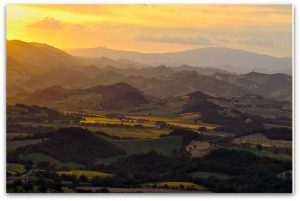
The areas where white truffles grow are few and far between. Unlike their black counterparts, they have yet to be cultivated which means they are only found in the wild by hunters with specially trained dogs. Most of the white truffles are hunted in five or six regions of northern Italy, the most famous being Alba in Piedmont. A little known fact is that the majority of Italy’s truffles grow in Le Marche, with around two-thirds of the national crop (which is around 60 tonnes annually) originating in the regions around Acqualagna. White truffles have also been unearthed in countries such as Romania, Slovenia, Croatia and Serbia. Although the species found abroad is identical, most connoisseurs would agree that the Italian climate and terrain produce a superior truffle.However this is something of a hot topic to be discussed in another post.
2. The places where truffles grow are very difficult to access
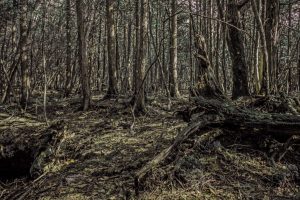
In our area, the majority of places where white truffles grow are quite literally dark, damp ditches in an unforgiving forest in the middle of nowhere surrounded by thick brambles. White truffles are very unique hence they only develop in a very specific, unusual microclimate. When I went on my first truffle hunt I was expecting something akin to a pleasant hike in the forest and had even packed some sandwiches for the trip. I got a very rude awakening that cold winter’s morning as I went sliding down a precariously steep embankment on my backside, ending up in an icy stagnant pool with my arms entangled in the undergrowth and a spaniel sitting nonchalantly on my head. Great times. More often than not you will spend 5 or 6 hours trekking through these delightful picnic spots only to come out scratched to hell and caked in mud with perhaps 15 grams of truffle or even nothing at all to show for it. You get in the car wet and miserable, eat your stale panini and drive home to face the scorn. Then the irony is that you can’t wait to get up the next day and do it all over again.
3.Truffles are only available for a short period of the year
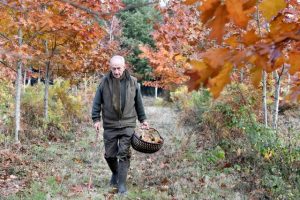
The white truffle season does not last very long at all. Peak condition white truffles are available from early – mid October to the end of December. Truffles grow from early September and can be found in January (sometimes all the way to early February) but the quality is generally so poor that they should be avoided. Besides the fact that these truffles will be a poor imitation of the beautiful peak season specimens,we should also mention that it is illegal to hunt for truffles outside of the season designated by the regional Forestry Corps.. Please truffle fans, let’s try and preserve the species !
4. They don’t keep for long

Truffles are only fresh for about a week and from the moment the hunter digs them up, they begin to lose their unique perfume. This means they have to be transported quickly using the most expensive means available in order to be eaten as soon as possible. As the white truffle is highly sensitive, any variations in temperature or problems such as a flight delay can result in the loss of thousands of euros worth of product and sadly this happens on a regular basis.
5. Only specially trained dogs can find them
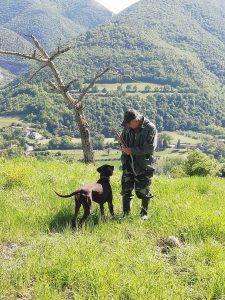
One of the hardest parts of being a truffle hunter is training your dog. Yes, you can buy a trained truffle dog starting at around 4000 euros but you may not know what kind of dog you are getting and what methods have been used in its training.
There are a lot of advantages to teaching your dog yourself from when it is a pup.This means that hunters can spend years working with their dogs to bring them up to scratch. The animals need to be trained lovingly and good hunters realise that there are no short cuts. Training your own dog requires charisma, effort and above all patience as some dogs (especially males) won’t start sniffing out truffles till they are about two and a half years of age. And even then as my uncle Alberto says ‘Some dogs hunt, some dogs piss on the tree.’
A lot of animal lovers worry that truffle dogs are being exploited. My advice would be to try to see the dogs in action even if it is just a video. It makes sense for hunters to choose breeds which seemingly have an innate love for what they do. Athletic dogs which are never happier than when they are out on the hunt. There are exceptions, of course but the majority of hunters value their dogs almost to the point of worship. They are proud of them and take great care of the dogs. Probably the hunters’ biggest fear is that anything should happen to their canine partner. In our family, the dogs work really hard with us and in return they are treated like royalty.
6. Big truffles cost more per gram
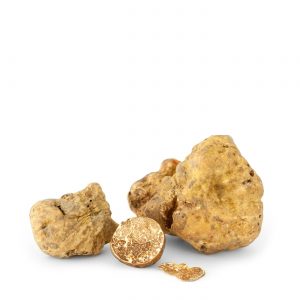
The price of white truffles is calculated per gram and varies according to at least 4 categories of weight. So a truffle in the range of 1-15 grams might sell for 1 euro per gram, whereas truffles over 15 grams and under 50 will be more expensive. A white truffle which weighs over 50 grams will cost even more, say 3 euros a gram. Then there is the giant category, the showpiece which can often fetch a very high price especially if it’s also a good shape, undamaged and attractive in colour.
On an average day, we usually find small truffles in small quantities , Finding a giant truffle (over 100 grams) is quite rare and might happen once or twice a week so a lot of the time you could be out truffling and coming home with 100 grams of small truffles untill you finally hit the jackpot. In addition, damaged truffles are worth a lot less. This means we need to be very careful not to let the dogs scratch the truffle when they are digging. Also the hunter works as delicately as an archeologist so as not to break the truffle during the tricky unearthing process.
As an aside, I remember when I was a little boy, maybe 5 or 6 and my uncle Donatello wanted to tease me. The hunters were sitting in our kitchen drinking wine and that day Donatello had found a perfectly round, golden-coloured truffle that was completely intact. He held it out to me and said “Look Giorgino, I found a potato!” . I took it from his hand and threw it to the kitchen floor where it broke into three or four worthless pieces to the sound of a collective groan.
Luckily they all saw the funny side later after a few more glasses of wine. Of course, Italian families being what they are, I have never been allowed to forget this incident!
7. Truffle prices vary according to the weather

Weather conditions are the most important factor in regard to the development of the tuber magnatum pico in its pre- fruited form.
This means that some years truffles are even pricier than usual as there are fewer truffles due to that year’s temperatures and amount of rainfall. The ideal weather conditions for optimum development of truffles is rain in the months of March and April and more wet weather later on in the summer months. The reason being that summers in Italy can be so warm that if there isn’t enough rain in these months the truffle will either never grow to its full potential or never grow at all .In other words, truffles are hyper-sensitive.
Rain can also affect the availability and thus price in the autumn months. Truffle hunters are usually sturdy types who are not put off by a bit of bad weather. However November is the wettest month of the year in Italy with total precipitation often surpassing 100 millimeters. This means that there will often be days or even weeks when there are no fresh truffles on the market because all the hunters are at home going crazy waiting for the downpour to stop.
8. Climate change is real and it is affecting white truffles.

The effects of climate change on white truffles are yet to be fully understood , but Ulf Büntgen , professor of Environmental Systems Analysis at Cambridge University has come up with some very compelling data. It shows that since the 1970’s summer rain patterns have altered significantly, droughts are occurring more frequently and temperatures are steadily increasing and that these weather conditions result in a corresponding decline in the number of truffles.The fragile natural system needed in order for truffles to thrive is under threat which means that they are getting scarcer.
9. Basic Economics
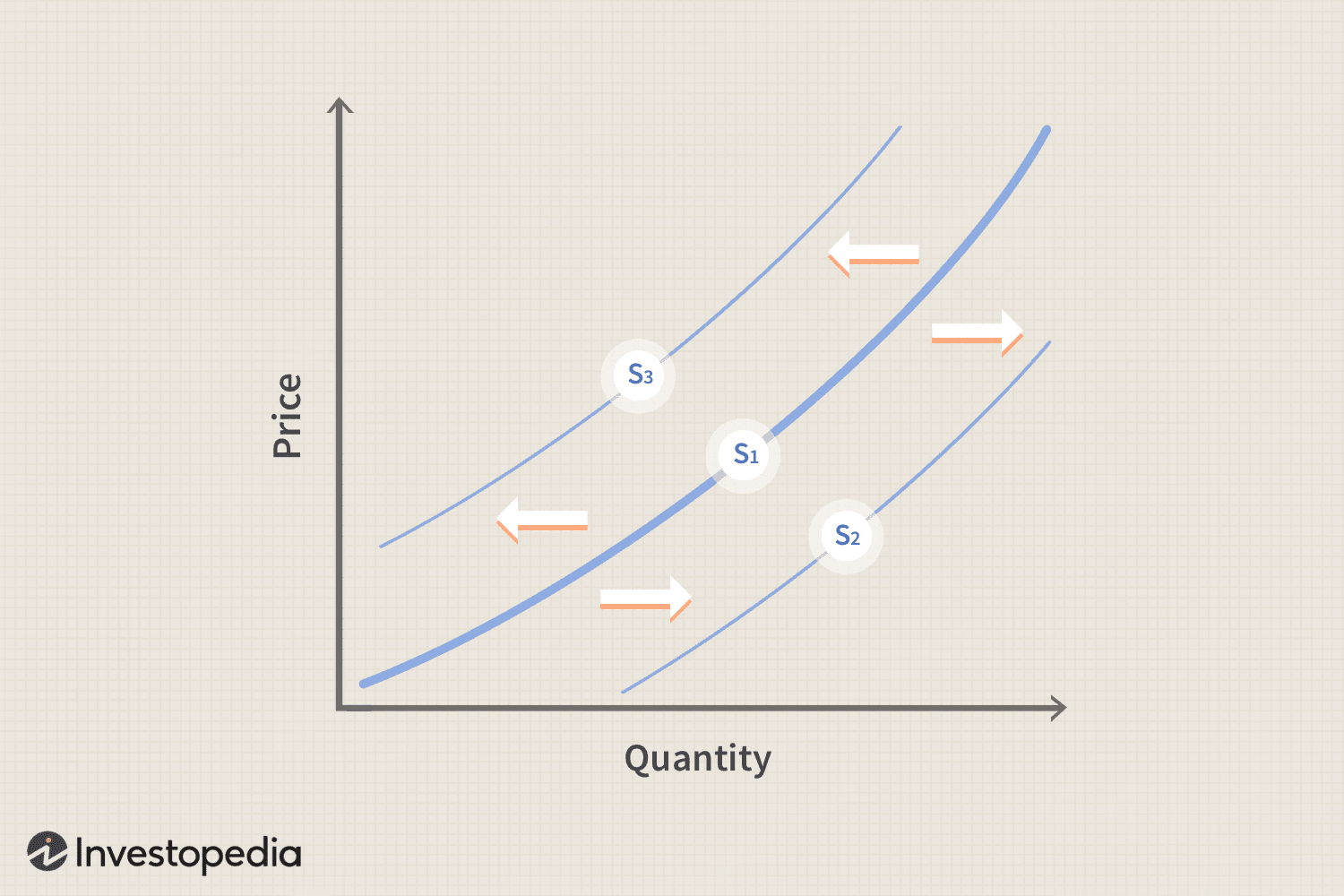
There is a great demand and a limited supply. In fact only 65% of the demand for white truffle can be met.
10. Their taste and aroma is incomparable.
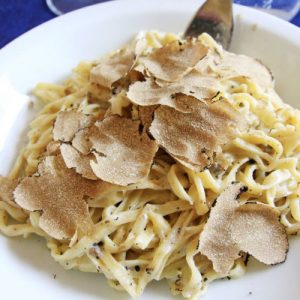
I have saved the most important reason till last. If you have ever got your hands on a really fresh white truffle you will know that the flavour is like nothing else in this world,. It’s impossible to describe- the only thing comparable to white truffle is another white truffle. When people say they don’t get what all the fuss is about, I suspect it’s because they have unwittingly been served a truffle which has passed its prime.



